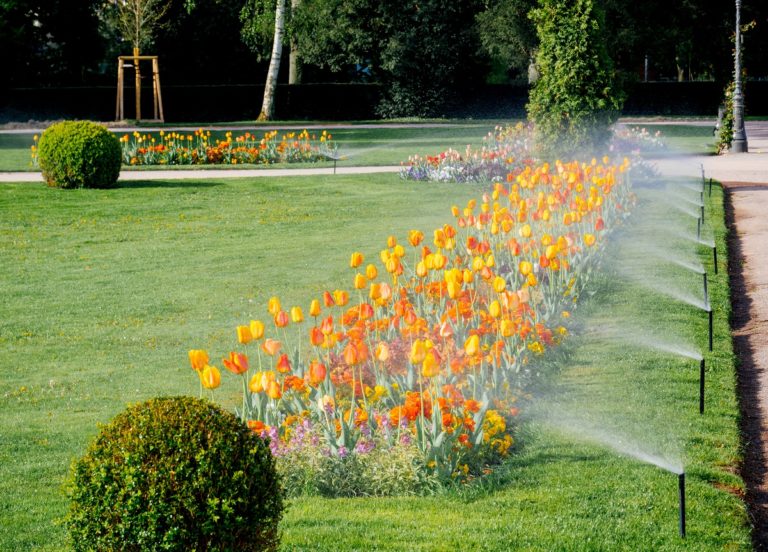A patch of vegetation, whether it be a plant rack or a trellis to beautify your porch, a garden neatly nestled in your yard, or the plant vases you nurture inside your home, would be such a pleasure to watch, especially when it’s in full bloom. As it’s in one way a micro-ecosystem that responds to fluctuating environmental conditions, it’s only natural that maintaining it is just as challenging. Not the most visible to the naked eye, insects of various classes sustain themselves among these spreads of greenery.
Oftentimes, we view insects as nuisances to the slice of nature we made for our homes. Although we have an idea, we dismiss the fact that some of these little creatures maintain a beneficial symbiotic relationship with our plants, even rid them out of disgust. Some bugs have the worst rep in the gardening world; their benefits are often overlooked because of their creepy crawling looks.
This post aims to enlighten those who, at one point, might have discriminated against those insects that turned out to be just what their plants loved and help them identify which ones are worth keeping to keep not only the garden but also the home safe and pest-free.
What insects are commonly found in the garden?
Partly, we owe our unfamiliarity to insects in the vast arthropod family. When we see anything worm or bug-like with lots of feet, we immediately feel the urge to crush or throw them away with our shovels. But, perhaps having a short biology class throwback would help in refraining from this behavior.
Garden insects are commonly categorized into the following three types:
Pollinators
Bees could claim their rightful spot as the most popular pollinator. As their niche is primarily collecting nectar from flower to flower and naturally brushing their legs against the flowers’ pollen, they aid in fertilizing plants in the process. Other pollinators that deserve just the same credit from the USDA for their incredible contribution to the flower industry include butterflies, moths, ants, beetles, and wasps.
Predators
As the name implies, predator insects seek prey for them and their babies to eat. A great example of these is spiders. Many insects like the ladybug, the lacewing, and the praying, falling under the predator category, are those you would like to keep around as they control the pests in your yard.
Parasites
Parasites are also predatory by nature as they live off of another living insect and lay their eggs on it. Braconid wasp eggs clinging onto a hornworm’s back is one common occurrence. Just as when these eggs develop, these new young will feed on what’s left of the living insect host.
Pests
These sorts of insects are the ones we wouldn’t want to invite as they’re a major source of disruption in our lives. Agricultural lands and gardens are prone to infestations by caterpillars, grasshoppers, and aphids. Among pests and even animals, mosquitoes pose the biggest threat to human health as they could carry illness-causing pathogens. For this reason, it is crucial to be aware of how to keep your place free of them or know of mosquito control services in your area.
Indoors, there are also insects like bed bugs that bite and cause irritation to the skin. Cockroaches like to lurk where you store your food. Termites, which feed on aging wood, are common house pests but are hard to detect. Overall, pests cause a big inconvenience.
Now that we’ve reached this point, it’s only right to note that insects perform their unique roles in nature just like humans and other living things. Pests aside, some insects can be seen in a better light. Find out in the next section.

What insects will your garden love?
In no particular order, the following insects do more than just fend for themselves. They’re called ‘beneficials’ by many for their instrumental role in keeping pests in the garden at bay.
Praying Mantises
Although slightly resembling a grasshopper with its green body and protruding eyes, the praying mantis prey on them among other pesky pests like flies and moths. Too bad, they could be impartial as predators; unsuspecting bees and butterflies could fall victim to them too. They have huge appetites that farmers rely on them to keep the farm pest- and even small rodent-free.
Spiders
Despite the sinister associations we give to this fellow, the spider is an efficient pest killer. Its sharp senses and agile legs make devouring live insects like bed bugs, mosquitoes, roaches, flies, and aphids easy. One well-known beneficial spider is the wolf spider. They have big growth potential, but they are not dangerous. Leaving them alone would be best if you see them outside.
Dragonflies
Notable for targeting flying pests, having dragonflies around makes for a safer environment. They are such efficient hunters as to eat as many mosquitoes in quantities many times their weight. What’s more remarkable is that they can capture and eat pests while they are in flight.
Hoverflies
Slightly resembling wasps and bumblebees for their yellow and black abdomen, hoverflies are reliable pollinators too. As its name suggests, a hoverfly can often be seen hovering over flowers in search of nectar. In their larvae form, they feast on caterpillars and aphids, which are notorious for sucking the life out of plants’ leaves. Some species of the hoverfly feed on dead plants and animals in soil or select bodies of water.
Ground Beetles
Ground beetles’ imposing black physique may seem intimidating. Still, you’d want them over your garden if you’ve had enough of those maggots, slugs, and caterpillars ruining your precious plants or even ants that ventured into building their kingdom in your place. What makes them very useful to have around is they also consume seeds of weeds before they wreak havoc in your garden.
Ladybugs
Don’t mistake these red polka-dotted bugs as cute because they are vicious predators as well. As larvae, they could eat up to 40 aphids every hour. When fully grown, they eat huge quantities of aphids, caterpillars, and mealybugs.
Beneficial insects are no doubt the gems you’d want to buy yourself or attract to your garden. Having too many of them around is another story, though. This is when your regular inspection should come into play. In the end, a healthy balance is key to keeping your garden lush and vibrant.



